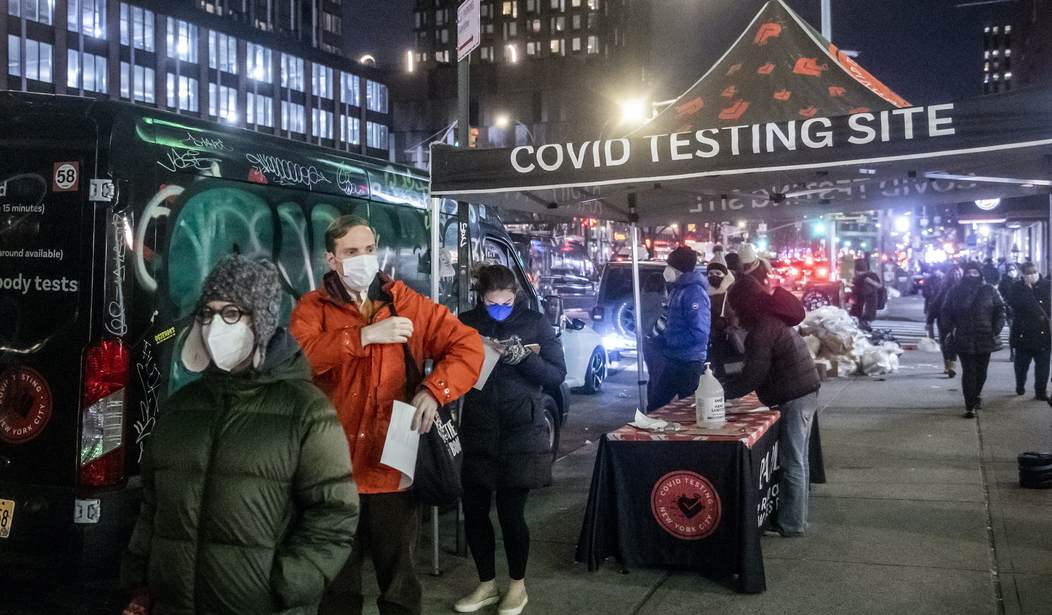It depends on how you look at it.
If we’re looking at the trend in hospitalizations state by state, then no, no big deal:

Lotta green there, signaling low community levels of COVID. If, on the other hand, we’re looking at *transmission* state by state, well then:

Red means high transmission, encompassing more than 62 percent of the country at the moment. According to the Times’s COVID tracker, the United States recorded more than 187,000 cases yesterday, the most in a single day since this past winter’s epic Omicron wave. And we know from painful experience that when cases rise, hospitalizations and deaths will soon rise too. It’s already begun, in fact:
"Only" >200,000 new *confirmed* cases today in the United States, despite lack of tests and reporting.
635 deaths, a 15% increase this week compared with lasthttps://t.co/QPRo6jaOka
If this is a "hidden" wave, it's in plain sight.— Eric Topol (@EricTopol) May 26, 2022
The point to remember about cases in 2022 is that there are enough rapid tests around now that most people will never have their infection officially confirmed with a lab test. That means the true number of infections is some large multiple of the official case count — possibly five or even seven times as many. Which means the U.S. probably had somewhere between 935,000 and 1.3 million cases yesterday alone.
Which feels … wavy, even if the daily death tolls are thankfully a shadow of what they used to be before mass vaccination and Paxlovid.
New York magazine declares that the fifth wave is here and identifies the culprit:
“Any sort of look at the metrics on either a local, state, or national level is a severe undercount,” Pandemic Prevention Institute epidemiologist Jessica Malaty Rivera told the Post. Scripps’ Dr. Eric Topol wrote a week ago that there are likely at least half a million new infections happening every day, making this new wave the second largest to strike the country. And it’s been under way for a while…
The U.S. wave is also being fueled by at least one subvariant, BA.2.12.1, that seems to be able to reinfect people who were previously infected with the original Omicron strains (BA.1 and BA.1.1) just months ago. As of the week ending May 14, the CDC estimated that 47.5 percent of new U.S. COVID infections were from the BA.2.12.1 variant, which means the next round of data will likely indicate the subvariant has become the dominant COVID strain in the country, beating out BA.2, which had itself become dominant by the end of March. And the Omicron subvariants, each with their own unique advantageous mutations, are still coming: BA.4 and BA.5 are circulating in the U.S.; it remains to be seen if they will be more dangerous than BA.2.12.1.
Read that last part again. The virus is evolving so quickly to become more contagious that one subvariant is able to replace another as dominant in a nation of 330 million people in the span of two months. That seems to be the biggest COVID problem facing the country — as broader population immunity puts evolutionary pressure on the virus to figure out ways to keep infecting us, it’s getting better at reinfecting people who’ve already been infected by a different strain or substrain. And it’s getting better so quickly that experts have begun to wonder if science can keep up:
And BA.1 and future versions are A LOT different. So whatever the late in coming data tells us this summer might be irrelevant.
Even if we plan to update vaccines, once/year, we are barely at that pace. And with the virus changing 3-4 times/year, it’s just not enough. 18/
— Andy Slavitt 💙💛 (@ASlavitt) May 20, 2022
How the hell do you build a useful vaccine in 100 days if the virus is spinning off dominant new subvariants every 60 days or so? Thankfully, the protection from severe disease instilled by the current vaccines appears to be holding up even against Omicron’s fiendish children. (Maybe they’ve evolved to be less virulent too.) But the more infections there are, the more opportunities the virus has to mutate into something more dangerous.
There appears to be no firebreak against COVID waves available to us. Even the mRNA vaccines increasingly appear to scientists to have an unfortunate flaw. They work well and have provided durable defenses to serious illness but the protection they offer from infection is unusually short-lived:
What we can tell after more than a year of experience with the mRNA vaccines is that their protection starts high but seems to fade more quickly than the immunity that remains after a Covid-19 infection, according to Bhattacharya…
With the adenoviral vector vaccines, antibody levels don’t seem to climb as high initially as they do with mRNA vaccines, but they do seem to persist for longer periods at these lower levels, pointing to some difference in the body’s response to them that we don’t fully understand.
The mRNA vaccines will keep you out of the hospital but within a few months of inoculation you’ll be vulnerable to another infection, it seems. Which is good news for a virus that needs as many hosts as possible to maximize its evolutionary fitness.
There’s another setback in our pharmaceutical countermeasures, although it may be a minor one. Some unknown but meaningful share of infected people who are taking Paxlovid end up experiencing “rebound” symptoms of COVID after their five-day course of treatment is done. Scientists are trying to figure out why, but the phenomenon is real.
“There were a lot of symptoms associated with the rebound, actually, almost as much as there was for the original infection,” said Davey Smith, an infectious disease specialist at University of California, San Diego, who recently documented one such case. “Headache, fatigue, cough.”…
“There’s no question rebound happens — we’ve seen it since the beginning of the pandemic,” he said. “Is the rebound related to infection itself? Is the rebound related to the administration of drugs like Paxlovid, or is a rebound related to neither? That’s the question.”
Scientists are confident that the virus isn’t evolving resistance to the drug, having seen no evidence of that. But rebound cases are another way in which Omicron and its subvariants keep prying open a door to infection that medicine continues to try to shut. We’re six months away from the start of the expected winter wave and it’s not clear what vaccine manufacturers can do to try to head off a quickly evolving virus. Do they peg the next iteration of the vaccine to the most dominant strain of Omicron right now? Do they try to anticipate what the virus might look like by winter and peg it to that? No good answers.







